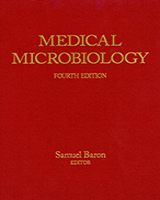NCBI Bookshelf. A service of the National Library of Medicine, National Institutes of Health.
Baron S, editor. Medical Microbiology. 4th edition. Galveston (TX): University of Texas Medical Branch at Galveston; 1996.
Medical parasitology traditionally has included the study of three major groups of animals: parasitic protozoa, parasitic helminths (worms), and those arthropods that directly cause disease or act as vectors of various pathogens. A parasite is a pathogen that simultaneously injures and derives sustenance from its host. Some organisms called parasites are actually commensals, in that they neither benefit nor harm their host (for example, Entamoeba coli). Although parasitology had its origins in the zoologic sciences, it is today an interdisciplinary field, greatly influenced by microbiology, immunology, biochemistry, and other life sciences.
Infections of humans caused by parasites number in the billions and range from relatively innocuous to fatal. The diseases caused by these parasites constitute major human health problems throughout the world. (For example, approximately 30 percent of the world's population is infected with the nematode Ascaris lumbricoides.) The incidence of many parasitic diseases (e.g., schistosomiasis, malaria) have increased rather than decreased in recent years. Other parasitic illnesses have increased in importance as a result of the AIDS epidemic (e.g., cryptosporidiosis, Pneumocystis carinii pneumonia, and strongyloidiasis). The migration of parasite-infected people, including refugees, from areas with high prevalence rates of parasitic infection also has added to the health problems of certain countries.
A misconception about parasitic infections is that they occur only in tropical areas. Although most parasitic infections are more prevalent in the tropics, many people in temperate and subtropical areas also become infected, and visitors to tropical countries may return with a parasite infection.
The unicellular parasites (protozoa) and multicellular parasites (helminths, arthropods) are antigenically and biochemically complex, as are their life histories and the pathogenesis of the diseases they cause. During their life, parasitic organisms typically go through several developmental stages that involve changes not only in structure but also in biochemical and antigenic composition. Some helminth larval stages have little resemblance to the adult stages (for example, those of tapeworms and flukes). Some parasitic protozoa also change greatly during their life history; for example, Toxoplasma gondii is an intestinal coccidian in cats but in humans takes on a different form and localizes in deep tissues. Some of these infections can convert from a well-tolerated or asymptomatic condition to life-threatening disease. Many parasitic infections are transmitted from animals to humans (zoonotic infections); the human disease may or may not resemble the disease caused in the lower animal host.
This section of the book has two types of chapters. Several general chapters deal with the structure and classification of parasites and the mechanisms of parasitic diseases. The remaining chapters describe the specific human parasites and the diseases they cause. Emphasis is placed throughout on the basic biology of the pathogens and their host-parasite relationships. Thus, descriptions of the basic properties of the pathogens, the pathogenesis of the diseases they cause, host defenses, and epidemiology are highlighted. Practical information on clinical manifestations, diagnosis, and control has been included in the chapters on specific pathogens. Most chapters treat a group of related pathogens (for example, trematodes, cestodes). Other chapters are more limited in scope because of the expertise of the authors and the difficulty involved in including these species in the groups discussed in the other chapters.
This section gives the reader a broad, in-depth coverage of medically important parasites. Such coverage is essential to give students the awareness and understanding necessary for proper diagnosis, treatment, and prevention of the parasitic infections. The most important element in diagnosing a parasitic infection is often the physician's suspicion that a parasite may be involved—a possibility that is too often overlooked. This kind of awareness requires a knowledge of the biology of the parasites. Diagnosis of parasitic infections requires laboratory support, since the signs and symptoms are often nonspecific. A variety of methods and specimens are used for diagnosis. Since the most common parasites are enteric, microscopic examination of fecal specimens is done more often than any other laboratory procedure in the diagnosis of parasitic disease. Culturing has little application in the diagnosis of most parasitic infections, although it has been employed, for example, for Trichomonas vaginalis and Entamoeba histolytica infections. Immunodiagnostic tests are useful in several infections, including extraintestinal amebiasis, visceral larva migrans, and trichinosis.
Because the laboratory is so important in diagnosis, its personnel must be well trained. Continuing training and refresher courses should be encouraged and supported. In the United States, excellent short courses in diagnostic parasitology are available in various state and federal health laboratories and at the Centers for Disease Control (CDC) in Atlanta. These laboratories also offer a variety of diagnostic services in parasitology, including specialized serologic tests. Medical scientists in the United States should be aware of the Parasitic Disease Drug Service at CDC, from which they may obtain drug information and certain drugs not readily available. Announcements of regional workshops and continuing education programs in parasitology can be found in various journals, for example the American Society for Microbiology News.
Gilbert A. Castro
Leroy J. Olson
- Introduction to Parasitology - Medical MicrobiologyIntroduction to Parasitology - Medical Microbiology
- UTP3 [Pongo abelii]UTP3 [Pongo abelii]Gene ID:100459621Gene
Your browsing activity is empty.
Activity recording is turned off.
See more...
